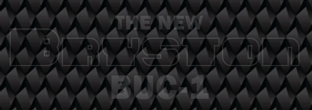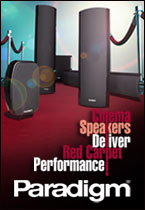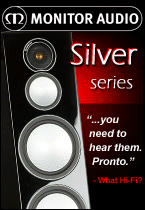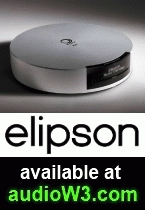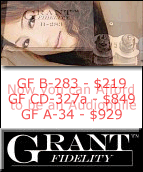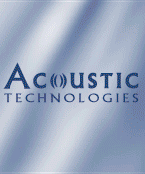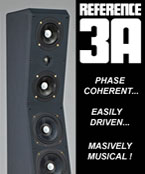
We are now well entrenched into the digital age - yet it is not uncommon to come across headlines like this: Vinyl May Be Final Nail in CD’s Coffin (Wired, October 29, 2007), Vinyl Gets Its Groove Back (Time, January 10, 2008), Sagging CD Sales Put Vinyl Back In The Groove (City News, Toronto, March 26, 2008), How Vinyl Got Its Groove Back (CBS News, August 19, 2008).
Now of course you would expect to see these sorts of headlines in hi-fi audio magazines, but the mainstream media? “Nostalgia” and “retro kick” may be what you are thinking, but you only need to spend a little time in a used music shop to realize this does not seem to be the case. For the past year, the used CD and DVD shop down the road from me has had up a sign that reads, “We want your vinyl”. It is teenagers, born in the 1990s that are flipping through the used records, not baby boomers. The RIAA reported that 2007 sales in the American music industry sold 36.6 percent more Extended Play (EP) and Long Play (LP) records than the previous year while CD unit sales declined 11.7 percent. Is it a fad? It could be, but 2008 sales are continuing to show more sales growth and major online retailer Amazon continues to add more new vinyl to their catalog.
My interest in music began as a teenager in the mid 1980s and a few years later I had moved from analogue cassettes and LPs to compact discs. In a few more years the all of the cassettes were gone, but for some reason I decided to hang on to the LPs and into storage they went.
Over the past two years an increased presence of new and used vinyl in the local and online music stores has brought forth a renewed interest in records for me. Out came the old turntable and the love-hate relationship began. If you are not familiar with records, there can be a lot of problems with them - rumble, wow and flutter, static, surface noise and dust as well as the inconvenience of having to flip the album every 20 minutes. Despite all of these problems - some of which drive me crazy, the idea of an improved analogue system continued to grow on me and I eventually decided to treat myself to a new turntable.
My LP collection is not large, and I would consider myself as a casual listener of vinyl who appreciates good playback. On that basis, I felt that an inexpensive entry-level turntable of good quality would be an appropriate choice for me. The local marketplace had two inexpensive entry-level turntable options - the Rega P1 ($399) and the Pro-Ject Debut III ($349). Both the Rega P1 and the Pro-Ject Debut III are well-regarded entry-level turntables and they seemed to fit what I looking for in terms of style, playback and cost. I decided to try the slightly more expensive Rega P1 as I was well aware of the excellent reputation that Rega has developed over the numerous years that they have been developing turntables.
The Rega P1 is a fully manual turntable. For those new to turntables or those that are familiar with the automatic ones, a fully manual turntable means that aside from the power switch to start the turntable and a lever to raise and lower the tonearm everything else is manual. For instance, after starting the turntable you will need to place the tonearm at the beginning of the record to start playback. After some 20 minutes or so, you will manually need to lift the tonearm off the end of the record as there is no automatic mechanism that will return the tonearm. Furthermore, if you would ever like to change the speed of the turntable, there is no simple switch that you can flip. To change the playback speed of the turntable you need to lift off the platter and then move the belt to the other pulley step. All of this is very simple to do, but it is worth mentioning for those who are not familiar with how manual turntables operate.
The P1 is a relatively new entry-level turntable offering from famed British turntable manufacturer Rega Research Limited. Since 1973, Rega has been developing turntables that are well known to deliver quality sound and performance at an unrivalled price. However, the P1 is a new venture for Rega in that it is the least expensive turntable ever offered by the company. Consistent with the traditional design of Rega turntables, the P1 consists of a solid, but lightweight plinth and a good quality AC motor and main bearing. The P1 comes with a completely new tonearm, the RB100. The new RB100 is a lower cost replacement for the similar RB250 and RB300 tonearms. The RB100 features a simplified alloy arm tube that is fitted with a plastic headshell, plastic counterweight stub and an adjustable counterweight. The tonearm comes ready-fitted with an Ortofon OM5e high-output moving magnet cartridge. The Ortofon OM5e is a modest OEM cartridge. The cartridge has already been aligned for you and this makes setup of the turntable ultra simple. Armed with the simple setup instructions that are provided, a complete novice can setup this turntable up in about ten minutes. Instead of a glass platter for which Rega is famous for, the platter for the P1 is constructed from 11/16″ medium density fiber (MDF) that has been sprayed black and will not be winning any fashion awards. Now while the MDF platter is clearly a compromise, it should be appreciated that it would be impossible to make this entry-level price point with a glass platter. A removable black felt mat tops off the platter. The plinth is constructed using lightweight wood and sits on three rubber pods that are common to the Rega Planar turntables. The appearance of the P1 is plain and the fit and finish is good. The plinth is nicely made and finished with a dark semi-gloss laminate. The acrylic clear plastic dust cover is also well made and is removable.
As the P1 became a replacement for my older mid-fi turntable, the excellent sound quality from the entry-level Rega P1 turntable made a strong positive first impression. It produced a rich, warm sound, solid images and a large soundstage that engages one with the music. It is no wonder why some of the younger generation who has been accustomed to the thin sound of MP3 are discovering and enjoying the vinyl medium.
The listening setup consisted of a NAD C162 preamplifier, a DIY gainclone amplifier (do-it-yourself clone of the 47 Laboratory 4706 Gaincard) and DIY speakers with either Fostex FX120 or Jordan JX92S drivers. The records that were auditioned with the P1 ranged from Cold Play and Kate Bush on new 180 gram vinyl to releases from the mid 1980s. Let’s be clear, the Rega P1 is no giant killer and it would be unreasonable to expect that level of performance from an entry-level player. However, I found the P1 to be an excellent turntable that did of great job of engaging one with the music with a sense of liveliness, emotion and character that made for hours of enjoyable listening. The P1 is fairly quiet, in particular with regards to surface noise when compared to similarly priced tables. This for me is a big deal as the music I prefer often has quiet passages and I hate surface noise. At the extreme lower and upper limits the sound was a little rough, but very natural throughout the midrange. Music had a good rhythm and pace with good detail and dynamics. The soundstage was also good - wide with good depth, but the imaging at times seemed slightly out of focus.
The Cold Play vinyl came in a bundle with the CD. It only took a minute or so to cue the two together so I could switch between vinyl and CD with the remote. Unfortunately the CD player (NAD C521i) was louder so a true blind comparison could not be made. It is not difficult to note the differences between the analogue and digital sources. The analogue setup does not have the extension at the extremes nor the resolution that a CD can offer. However, to my ears there is no doubt that the P1 provided a more natural and involving performance that to me is what listening to reproduced music is all about.
A turntable is not for everyone. If you are new to vinyl, you should give consideration to the problems previously noted, surface noise, inconveniences, etc. If you can look beyond that (and some can’t), you owe it to yourself to audition one at a hi-fi shop - you may like what you hear. I found the P1 to be a significant improvement over my older mid-fi unit. For the very modest price of $399, the Rega P1 is the perfect turntable for those just discovering vinyl or those looking to replace an older turntable.
Manufacturer:
Rega
www.rega.co.uk
Distributed in Canada by Plurison, 1-866-271-5689
Rega P1 Turntable
Price: $399 CDN
Click here to discuss this article on the CANADA HiFi Forum




